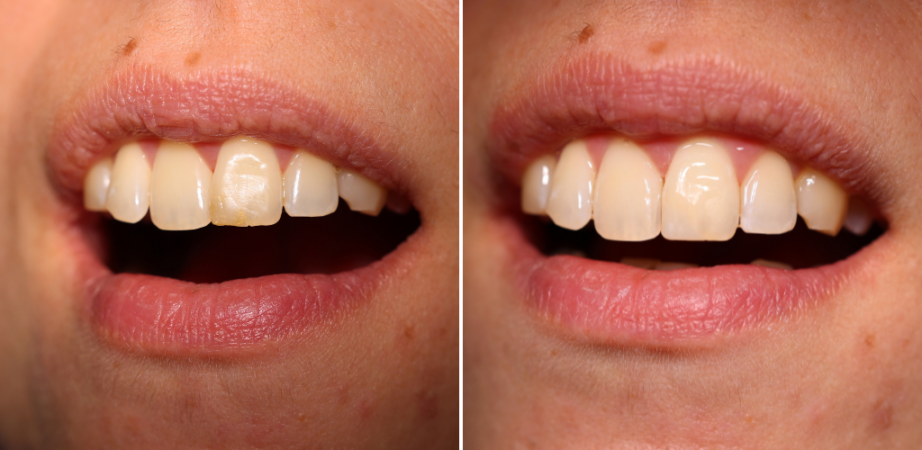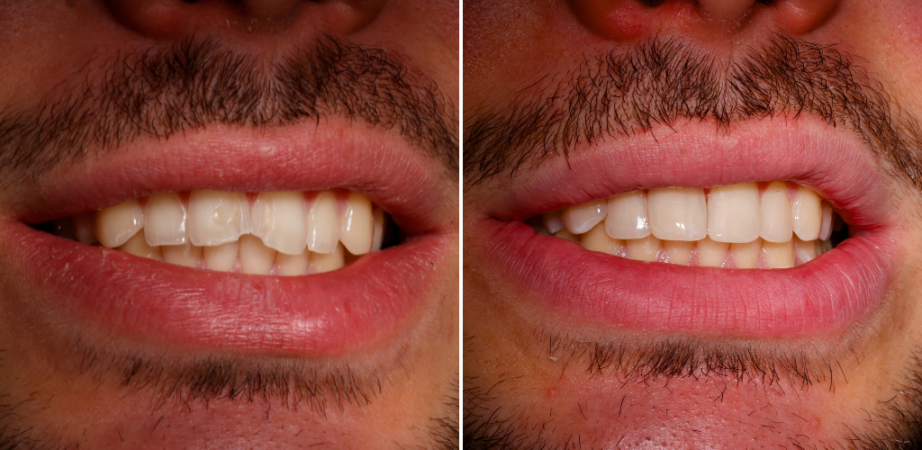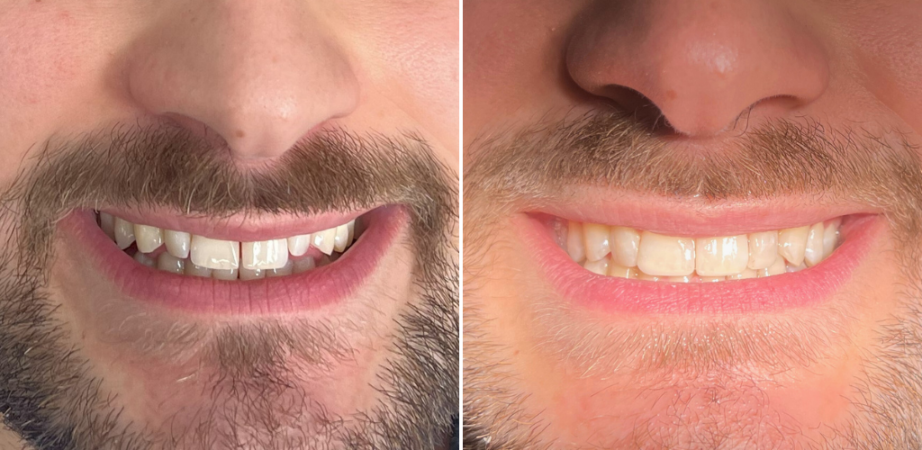Composite Laminating: An Innovative Technique for Aesthetic and Durable Dental Restorations
Composite restorations represent a major advance in dentistry, offering aesthetic and durable solutions for dental restorations. These treatments are chosen for their ability to blend with the natural tooth, ensuring both functionality and improved appearance.

What is composite care?
Composite dentistry is a modern method of restoring teeth using a resin composite material to repair damaged teeth. The process begins by carefully preparing the affected tooth, often by removing decay or adjusting the structure to receive the composite. The dentist then applies the composite in successive layers, ensuring that each layer is correctly placed and shaped to restore the tooth’s shape and function. Each layer of composite is cured using a special light that activates the rapid hardening of the material.
One of the main advantages of composite treatment is its ability to mimic the colour and translucency of natural teeth, providing a virtually invisible aesthetic restoration. What’s more, composite adheres well to the tooth, often resulting in less invasive restorations compared to older methods. This adhesion also strengthens the remaining tooth structure. Once the restoration is complete, the dentist shapes and polishes the surface to ensure correct occlusion and a natural appearance.
Good care and regular maintenance are crucial to their longevity and effectiveness.

Changing old composites
Dr. Lelièvre replaced an old composite with a new one and used stratification for an optimal, natural result.
Layering composites
Composite layering is an advanced technique used in cosmetic dentistry to create dental restorations that precisely mimic the appearance of natural teeth. This method involves applying different layers of composites of varying shades and translucencies, reproducing the nuances and approximations of natural teeth. Unlike conventional resins, which have a single shade with no depth, layering uses successive layers of resin to mimic the enamel/dentin/enamel layers. This multi-layer approach captures the complexity and depth of natural teeth, offering better aesthetic integration.
The aim of layering is to achieve harmonious integration with adjacent teeth, mimicking not only colour but also natural texture and shine. This makes it possible to create restorations that are virtually indistinguishable, ensuring an optimal aesthetic result. In addition, composite layering offers great versatility, allowing the dentist to treat complex cases such as dental restorations on visible teeth, where aesthetics play a crucial role.

Restoration of broken/eroded teeth
Dr. Lelièvre used the layered composite technique to repair the patient’s broken teeth, ensuring a solid and aesthetic restoration.
Who is it for ?
Composite treatments are recommended for a variety of dental situations, aimed at restoring and improving the appearance of damaged or altered teeth. They are versatile and can be used to restore cavities and fractures, close diastemas (spaces between teeth), modify the shape of teeth and restore pulp teeth (living teeth). These treatments represent a modern and effective solution for restoring teeth while improving their aesthetics, offering patients a long-lasting and aesthetically natural treatment option.
This method is particularly appreciated for its ability to mimic the colour and translucency of natural teeth, providing virtually invisible restorations. It is suitable for any patient wishing to restore the aesthetics of their smile while maintaining optimal chewing function.

Closing the diastema (space between the teeth)
Dr. Lelièvre used composite treatments to close the gap between the two front teeth.

Dr. Céline Lelièvre, Dental surgeon and aesthetic expert
Orthodontics with aligners – invisalign
Training in cosmetic dentistry – grf
Orthodontics – french graduate school of clinical orthodontics
